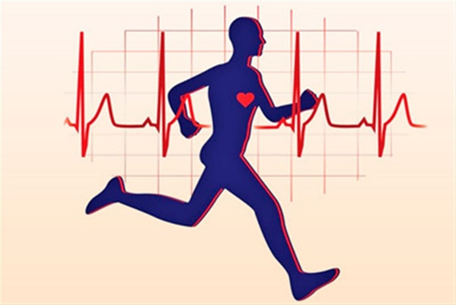
The idea that physical activity after a heart attack should be sharply limited is wrong. After a heart attack, an incorrect motor regimen, the patient's own fear of movement, can contribute to thromboembolic complications, heart rhythm disturbances, congestive pneumonia and other complications. Dosed physical activity, therapeutic exercise, dosed walking after a myocardial infarction strengthen the heart muscle and prevent the development of a repeated attack.
During the first month after a heart attack, it is important to follow the golden rule - avoid high physical activity. At the same time, in order to speed up recovery and improve the quality of life, it is equally important to maintain physical activity.
Recovery in each patient proceeds at a different pace. This is due to the different level of activity before a heart attack and the degree of damage to the heart muscle. A doctor's consultation is necessary before starting any physical exercise.
Minimum loads are necessary even during inpatient treatment. As you recover, you need to gradually increase your physical activity, under the doctor’s supervision. Recovery begins with walks - first around the ward, then the patient is allowed to go outside and then therapeutic exercise is prescribed. Therapeutic exercise improves blood circulation, increases muscle tone and normalizes heart function. In the future, exercises must be done at home.
At the first stage, walking on level ground that does not cause discomfort or unpleasant sensations in the patient, then the load increases from walking to climbing floors and eventually even running. Loads are selected strictly individually, taking into account the patient's medical history and the rate of recovery of the body after a heart attack.
To gradually include optimal physical activity in the patient's life until optimal recovery, there are programs for dosing physical activity after a myocardial infarction.
According to the classification, there are four classes depending on the patient's condition and the dosage of physical activity.
- The first class is for patients whose body copes well with physical activity and does not experience discomfort when walking at a fast pace, climbing several floors, or even moderate running.
- The second class implies some limitation of physical activity for a patient with minor reactions of the body to physical activity. Dosed walking or walking up to the 5th floor is allowed. Short low-intensity jogs are allowed.
- The third class - depending on the patient's condition, more gentle loads are selected - walking with rest and restrictions of up to 100-120 steps per minute or at a pace of up to 80-90 steps per minute without restrictions. Climbing stairs is allowed no higher than the 2nd-3rd floor.
- The fourth class - if there are complaints of vague pain or discomfort during any physical activity, then the patient is recommended only dosed, leisurely walking with frequent stops for symptoms of fatigue. It is important to learn to fully control the volume of physical activity and be sure to take breaks for rest, especially after intense physical exercise.
Some household chores, depending on the diagnosis, should be done with caution. Any kind of household chores are allowed for patients with first-second class heart failure, but for patients with fourth class, active cleaning and agricultural work are prohibited.
When patients after a heart attack do physical exercises, it is important keeping following rules:
- to exercise regularly
- exercise should preferably be done at the same time
- to avoid intense loads with lifting weights
- in warm weather, exercise should be done outdoors
- exercise should not be done outdoors in damp, cold and windy weather
- walking is an ideal type of physical activity, try to walk up the stairs instead of the elevator; avoid walking against the wind in damp and frosty weather - this can provoke an attack of angina
- exercise should not be done if you do not feel very well or feel tired
- try not to sit still for more than 30 minutes
- after exercise, the body must fully recover
- self-control is important when doing physical exercises
Therefore, it is important to gradually increase physical activity under the control of the patient’s well-being and the performance of his cardiovascular system – this is the main rule of physical rehabilitation!



